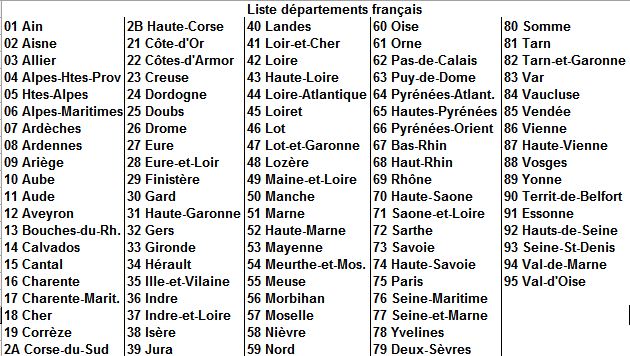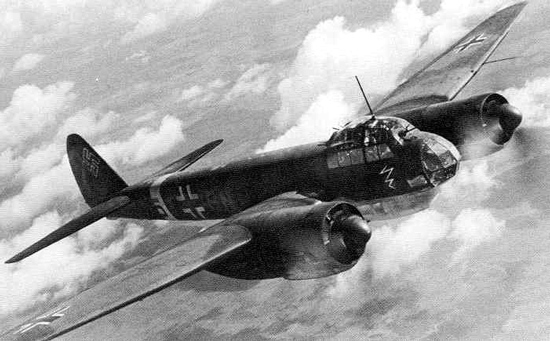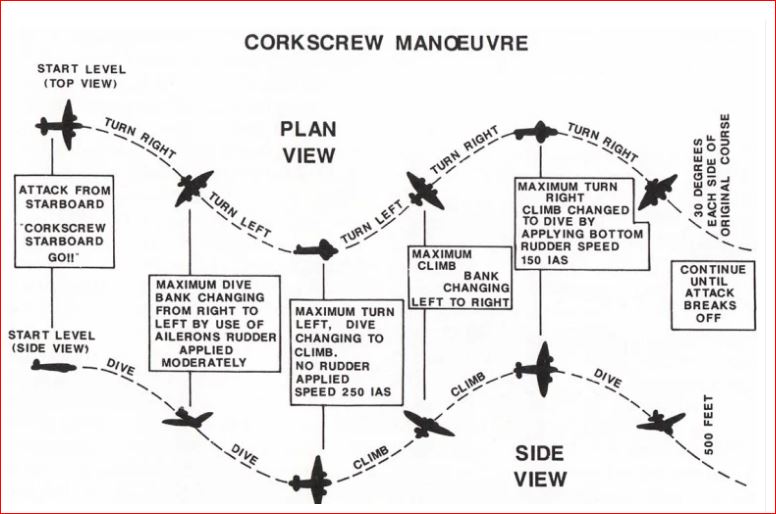
|
Crash - Halifax - Mk.II - s/n BB250 LQ°E |

|

|
Crash - Halifax - Mk.II - s/n BB250 LQ°E |

|
| Fiche France-Crashes 39-45 modifiée le 24-10-2022 | |||||
| Date | Nation |
 Département Département |
Unité | - | Mission |
|---|---|---|---|---|---|
| 12-03-1943 | Angleterre/Common. | Aisne | 405 Sq RCAF | Stuttgart (All) - Raid de 35 bombardiers Halifax (dont 5 perdus) | |
| Localisation | Trouée d'Anor - Cne de Mondrepuis (2 km E) - 5 km SE Fourmies (59) |
|---|---|
| Circonstances |
Abattu au retour par un chasseur de nuit  Junkers Ju88 - Photo du site passion-histoire.forumactif.comJu88 près d'Hirson (02) vers 23h45 - Avion évacué en parachute vers 01h00 |
| Commentaires | Décollage 19h00 le 11/3 Topcliffe, North Yorkshire UK |
| Sources ** | D.D'Agostino (source: Infos de la ville de Mondrepuis) / CWGC / search.ancestry.fr |
| Historique | 17/02/2011=Création - 13/09/2015=Ajout lien,mission,comm évadés - 28/11/2016=Ajout prénoms - 23/03/2021=Ajout lien,comm évadés - 24/10/2022=Ajout rapp perte |
| Grade | Prenom | Nom | Poste | Corps | Etat |
 Lieu d'Inhumation Lieu d'Inhumation |
Commentaires |
|---|---|---|---|---|---|---|---|
| P/O | Borden Carrick | Dennison | Pil | RCAF | Echappé | J/16008 - Né le 27/09/1911 - Cardale, Manitoba, Canada - Se pose au NO de Mondrepuis - Evasion par Réseau Oaktree/Bourgogne Pyrénées/Espagne/Gibraltar - Rapport WO 208/3314/1325 | |
| Sq/L | Emerson L | Logan | CoP | RCAF | Echappé | C/1359 - Fuite par Pyrénées/Espagne/Gibraltar - Rapport WO 208/3313/1174 | |
| Sgt | Emanuel George | Lacina | Mec | RCAF | Décédé | Cim London & Ext Longueval (02) 13.E.31 * | R/107026 - 24 ans - Né le 19/12/1919 - Fils de Peter William et de Martina (Carr) Lacina, Saskatoon, Saskatchewan, Canada - Aurait atterri dans un arbre, en serait tombé et aurait été tué - Initialement inhumé au Cim de Mondrepuis (02) |
| F/Sgt | Elmer Leigh | Bulman | Obs | RCAF | Echappé | R/72937 - Né le 24/08/1917 - Rustico, Prince Edward Island, Canada - Se pose vers Mondrepuis - Evasion par Réseau Oaktree/Bourgogne par Pyrénées/Espagne/Gibraltar - Rapport WO 208/3314/1326 | |
| F/Sgt | Gordon Lewis | Spencer | Nav | RCAF | Echappé | R/91858-J/16834 - Né le 01/08/1922 - St-Vital, Winnipeg, Manitoba, Canada - Se pose au NE de Mondrepuis - Evasion par Réseau Oaktree/Bourgogne par Pyrénées/Espagne/Gibraltar - Retour UK le 10/08/1943 - Rapport WO 208/3314/1345 | |
| F/Sgt | Harold Jack | Jennings | Rad | RCAF | Echappé | R/85952 - Fuite par Pyrénées/Espagne/Gibraltar - Rapport WO 208/3313/1175 | |
| F/Sgt | Robert Gray | MacDonald | Mit | RCAF | Décédé | Cim London & Ext Longueval (02) 13.E.30 * | R/124691 - 26 ans - Fils de Douglas Duncan et Pearle Olive Macdonald, Middleton, Nova Scotia, Canada - Tué dans la tourelle arrière - Initialement inhumé au Cim de Mondrepuis (02) |
| F/Sgt | Ronald Franck | Kennett | Mit | RCAF | Prisonnier | R/102033 - Pow 904 Stalag Luft6 |
| Fiche tech | Correspondance grades | Abréviations utilisées | Filières d'évasion | Camps de Pow | Bases RAF/USAAF | Utilitaires |
|---|
|
Traduction rapport AIR 14-1442 – PARTIE I ("1. The squadron had been carrying out Costal Operations from Beaulieu and this was the first operation which the crew had undertaken from Topcliffe. 2. The aircraft took off approximately 1900 hours to attack Stuttgart, the proposed route being - Topcliffe - Rye - 50.00N. 0115E - Chalons-sur-Marne - Bischwiller - Stuttgart and return same. 3. The outward trip was uneventful and the target was bombed from 19000 ft. After leaving the target the rear gunner changed places with Sgt Macdonald who had been looking out through the ventral blister on the outward trip. 4. On the return trip height was lost gradually but the Halifax became North of its proposed track, either as a result of the compass being out of order or due to the Met. winds being wrong. 5. A little before 0100 hours, the aircraft was flying at a height of 15000 ft in the vicinity of Hirson, when a red flare which the crew decided was a fighter flare was seen on the port beam. The moon was in its first quarter and was getting low, and the atmosphere was clear apart from a layer of stratus cloud at about 1,000 feet. 6. Almost at once, the Wireless Operator advised the Captain to start weaving as he had picked up a German conversation on the Tinsel frequencies on which he was searching. The pilot at once began weaving and the Bomb-Aimer then saw a searchlight eastern of the aircraft. 7. About five minutes after the flare was first seen cannon tracer which appeared to be coming from fine starboard quarter and below was seen by the pilot going up by the starboard Perspex panel. As soon as the aircraft was hit the pilot evaded by a steep climbing turn to port and the fighter made no further attack. It was not seen at any time during the combat."Original) - source: National Archives UK (P/O Dennison et F/Sgt Bulman) - par Ph Laroyenne "1. L'escadron effectuait des opérations côtières depuis Beaulieu et c'était la première opération que l'équipage entreprenait depuis Topcliffe. 2. L'avion a décollé vers 19 heures pour attaquer Stuttgart, la route proposée étant - Topcliffe - Rye - Châlons-sur-Marne - Bischwiller – Stuttgart et retour idem. 3. Le voyage aller s'est déroulé sans incident et la cible a été bombardée à 19 000 pieds. Après avoir quitté la cible, le mitrailleur arrière a changé de place avec le Sgt Macdonald qui regardait à travers la tourelle ventrale lors du voyage aller. 4. Au retour, l'altitude a été perdue graduellement, mais le Halifax était au nord de sa route proposée, soit parce que la boussole était en panne, soit à cause des vents violents. 5. Un peu avant 0100 heures, l'avion volait à une altitude de 15 000 pieds à proximité d'Hirson, lorsqu'une fusée rouge que l'équipage a considérée comme une fusée de chasse a été aperçue sur le flanc bâbord. La lune était dans son premier quartier et commençait à descendre, et l'atmosphère était claire à l'exception d'une couche de stratus à environ 1 000 pieds. 6. Presque immédiatement, l'opérateur radio a conseillé au capitaine de commencer à faire la manœuvre d’évasion [  Image issue du site 425alouette.wordpress.comcorkscrew] car il avait capté une conversation allemande sur les fréquences Tinsel [voir www.guerrelec.com] sur lesquelles il cherchait. Le pilote a immédiatement commencé à virer selon la manœuvre prévue et le bombardier a alors vu un projecteur à l'est de l'avion. 7. Environ cinq minutes après que la fusée éclairante ait été vue pour la première fois, un traceur de canon qui semblait provenir du quart tribord et en dessous a été vu par le pilote montant par le panneau tribord en plexiglas. Dès que l'avion a été touché, le pilote a dégagé par un virage en montée raide vers bâbord et le chasseur n'a plus attaqué. Il n'a été vu à aucun moment pendant le combat". Traduction rapport AIR 14-1442 – PARTIE II ("8. The fuselage and starboard wing were raked by the enemy's bullets and fire broke out between the starboard inner engine and the fuselage. The leading edge was buckled and torn at this point and flames were shooting out above and below the wing surface. One of the propeller blades was probably damaged as there was excessive vibration and the pilot tried to throttle back the Starboard Inner engine but the controls had no effect. The flight engineer reported on the intercom that there was a fire in the fuselage and he would try to put it out, with his extinguisher. The pilot took a quick glance back and noticed that there was a large fire, probably in the vicinity of the rest position, and that the armour plate door was swinging open, but he did not know whether it had been open at the time of the attack. He then ordered the crew to prepare to abandon the aircraft. 9. The flight engineer came forward and said he could not put out the fire, so the captain ordered the crew to abandon the aircraft, which was rapidly getting out of control. It responded to the elevators but not to the ailerons and neither starboard engines seemed to be giving any power, with the result that the starboard wing dropped. 10. The pilot asked the Flight Engineer to hand him his parachute and when this was brought the engineer helped him to put it on and checked that it was alright. He also asked whether the pilot was alright before he left and P/O Dennison was much impressed by the cool manner he finally left the aircraft which was by then completely out of control. 11. The crew baled out in the following order from the front hatch : navigator, wireless operator, 2nd. pilot, bomb-aimer, flight engineer, pilot. (It is not quite certain whether the 2nd. pilot left before or after the wireless operator). It is believed that the mid-upper gunner left some time during this period, but no word was heard from either gunner after the attack. At the time the navigator left the centre of the fuselage was well alight."Original) - source: National Archives UK (P/O Dennison et F/Sgt Bulman) - par Ph Laroyenne "8. Le fuselage et l'aile tribord ont été ravagées par les balles ennemies et un incendie s'est déclaré entre le moteur intérieur tribord et le fuselage. Le bord d’attaque était plié et déchiré à cet endroit et des flammes jaillissaient au-dessus et au-dessous de la surface de l'aile. L'une des pales de l'hélice a probablement été endommagée car il y avait des vibrations excessives et le pilote a tenté de ralentir le moteur intérieur tribord, mais les commandes n'ont eu aucun effet. Le mécanicien de bord a signalé sur l'interphone qu'il y avait un feu dans le fuselage et qu'il essaierait de l'éteindre avec son extincteur. Le pilote a jeté un rapide coup d'œil en arrière et a remarqué qu'il y avait un gros feu, probablement à proximité de la position de repos, et que la porte de la plaque de blindage s'ouvrait, mais il ne savait pas si elle était ouverte au moment de l'attaque. Il a ensuite ordonné à l'équipage de se préparer à abandonner l'avion. 9. Le mécanicien de bord s'est avancé et a dit qu'il ne pouvait pas éteindre le feu, alors le commandant de bord a ordonné à l'équipage d'abandonner l'avion qui devenait rapidement incontrôlable. Il répondait aux gouvernes mais pas aux ailerons et aucun des moteurs de tribord ne semblait donner de puissance, avec pour résultat que l'aile tribord a chuté. 10. Le pilote a demandé au mécanicien de bord de lui remettre son parachute et lorsqu'il l'a apporté, le mécanicien l'a aidé à le mettre et a vérifié qu'il était en bon état. Il a également demandé si le pilote allait bien avant de partir et le P/O Dennison a été très impressionné par la manière calme avec laquelle il a finalement quitté l'avion qui était alors complètement hors de contrôle. 11. L'équipage a sauté dans l'ordre suivant depuis la trappe avant : navigateur, opérateur radio, 2ème pilote, bombardier, mécanicien de bord, pilote. (Il n'est pas certain que le 2e pilote soit parti avant ou après l'opérateur sans fil). On pense que le mitrailleur supérieur est parti quelque temps pendant cette période, mais aucun mot n'a été entendu de l'un ou l'autre des mitrailleurs après l'attaque. Au moment où le navigateur a quitté, le centre du fuselage était bien allumé." Traduction rapport AIR 14-1442 – PARTIE III ("12. When the pilot's turn came to leave, the machine was diving fast and he was pressed up against his perspex canopy so that he could not get his feet onto the floor. He held onto the control column, however and managed to get his feet onto the dash. The elevators still seem to have been working as he was suddenly thrown onto the floor, and he then managed to crawl to the exit. He was hampered by either his oxygen tube or the intercom lead, which he had not been able to disconnect owing to his parachute having been put over the top of them. After getting through the hatch ha was unable to get away from the aircraft and he accordingly pulled the rip cord and was jerked away when the aircraft was at a height of 5000-6000 ft or less. He sustained two broken ribs and damaged a finger while in the aircraft. 13. The aircraft crashed about 1,5 miles from Montrepuis practically below the pilot before he got through the thin layer of 10/10 cloud, and burnt for two hours. He later heard that the starboard inner engine had been found about 1/4 mile from the rest of the aircraft, of which neither the port wing nor the front part of the fuselage were burnt. He was also informed that the rear gunner had been killed during the fighter attack by a bullet through the head. 14. F/Sgt Kenneth is understood to have come down near the wreck of the Halifax, but he either was wounded in the ankle or injured it on landing and was taken prisoner.15. Sgt Lacina is believed to have landed in a tree safely and later to have fallen out and been killed. 16. It was understood from the French people that the pilot who shot down the Halifax was a "Nomad" pilot with 123 aircraft to his credit, and that his aircraft was Ju.88. The airfield from which he is believed to operate is just south of the track of the railway line from Any (S.E. of Hirson) to Charleville and about 10 miles from Charleville. The hangar is well camouflaged on the western side of the field and there is a telescope like object mounted in the centre of the airfield on a standard. It is believed that only the one Ju.88 operates from that field and has red spinners. 17. There is believed to be a fighter aerodrome from which Ju88's operate on the Northern outskirts of Charleville and a radio station just to the South West of the town."Original) - source: National Archives UK (P/O Dennison et F/Sgt Bulman) - par Ph Laroyenne "12. Lorsque le tour de partir du pilote est venu, la machine plongeait rapidement et il était pressé contre sa verrière en plexiglas de sorte qu'il ne pouvait pas poser ses pieds sur le sol. Cependant, il s'est accroché au manche et a réussi à mettre ses pieds sur le tableau de bord. Les gouvernes de profondeur semblent toujours avoir fonctionné car il a été soudainement projeté sur le sol, et il a ensuite réussi à ramper jusqu'à la sortie. Il était gêné soit par son tube à oxygène, soit par le câble de l'interphone, qu'il n'avait pas pu déconnecter car son parachute avait été placé au-dessus d'eux. Après avoir traversé l'écoutille, il n'a pas pu s'éloigner de l'avion et il a donc tiré sur le cordon de lancement et a été éjecté lorsque l'avion était à une hauteur de 5 000 à 6 000 pieds ou moins. Il a eu deux côtes cassées et s'est blessé au doigt alors qu'il se trouvait dans l'avion. 13. L'avion s'est écrasé à environ 1,5 miles de Montrepuis pratiquement en dessous du pilote avant qu'il ne traverse la fine couche de nuages 10/10, et a brûlé pendant deux heures. Il apprit plus tard que le moteur intérieur tribord avait été retrouvé à environ 1/4 de mille du reste de l'appareil, dont ni l'aile bâbord ni la partie avant du fuselage n'étaient brûlées. Il a également été informé que le mitrailleur arrière avait été tué lors de l'attaque des chasseurs par une balle dans la tête. 14. Le F/Sgt Kenneth serait descendu près de l'épave du Halifax, mais il a été soit blessé à la cheville, soit blessé à l'atterrissage et a été fait prisonnier. 15. On pense que le Sgt Lacina a atterri dans un arbre en toute sécurité et qu'il est ensuite tombé et a été tué. 16. Il a été entendu des Français que le pilote qui a abattu le Halifax était un pilote "Nomad" avec 123 avions à son actif, et que son avion était un Ju88. L'aérodrome à partir duquel il est censé opérer se trouve juste au sud de la voie ferrée d'Any (S.E. de Hirson) à Charleville et à environ 10 miles de Charleville. Le hangar est bien camouflé sur le côté ouest du terrain et il y a un objet semblable à un télescope monté au centre de l'aérodrome sur un poteau. On pense que seul le Ju.88 opère à partir de ce champ. 17. On pense qu'il y a un aérodrome de chasse à partir duquel les Ju88 opèrent à la périphérie nord de Charleville et une station de radio juste au sud-ouest de la ville." Photos F/Sgt Robert G MacDonald et tombe sur www.veterans.gc.cat (Lien transmis par Alain Trouplin) |